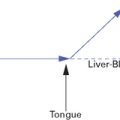 SWEATING
SWEATING
SPONTANEOUS SWEATING
Invasion of Wind-Cold with prevalence of Wind
Slight sweating, aversion to cold, fever, cough, itchy throat, slight breathlessness, stuffed or runny nose with clear watery discharge, sneezing, occipital headache, body aches, thin white tongue coating, Floating-Slow pulse.
This is due to a disharmony between Nutritive and Defensive Qi.
NIGHT SWEATING
YELLOW SWEAT
Observation, Chapter 20; Interrogation, Chapter 41
Yellow sweat was first mentioned in the ‘Synopsis of Prescriptions from the Golden Cabinet’ (Jin Gui Yao Lue, c. AD200). In Chapter 14, where yellow sweat is mentioned three times, it says: ‘With Yellow Sweat disease there is swelling, fever, thirst and yellow sweat like Phellodendron sap [i.e. bright-yellow]’.1
LOCALIZED SWEATING
Unilateral sweating
Unilateral sweating can occur on the left or the right side of the body. From an acupuncture perspective, this symptom is often due to an imbalance within the Yin or Yang Heel vessels. Unilateral sweating was mentioned in the ‘Yellow Emperor’s Classic of Internal Medicine ’ Simple Questions’ (Huang Di Nei Jing Su Wen), which says in Chapter 3: ‘Unilateral sweating is due to a withering of the channels on that side of the body’.2 A ‘withering’ or weakness of the channels on one side of the body may occur as a result of an accident to that side or after a high fever which injures the Yin fluids and leads to malnourishment of the channel of that side.
Deficiency of Qi and Blood
Unilateral sweating, poor appetite, loose stools, weak voice, tiredness, blurred vision, dizziness, numbness/ tingling of limbs, palpitations, dull-pale complexion, Pale tongue, Weak or Choppy pulse.
Sweating on the head
Observation, Chapter 20; Interrogation, Chapter 41
Sweating on the chest
Observation, Chapter 20; Interrogation, Chapter 41
Sweating on the chest is also called ‘heart region sweating’.
Sweating of hands and feet
Observation, Chapters 14 and 20; Interrogation, Chapter 41
Stomach- and Spleen-Qi deficiency
Sweating of hands and feet, cold hands, poor appetite, slight abdominal distension after eating, tiredness, lassitude, pale complexion, weakness of the limbs, loose stools, uncomfortable feeling in the epigastrium, loss of sense of taste, Pale tongue, Empty pulse.
Sweating of the palms
Observation, Chapters 14 and 20; Interrogation, Chapter 41
NOTES
1. Ren, He. A New Explanation of the Synopsis of Prescriptions from the Golden Cabinet Jin Gui Yao Lue Xin Jie  ). Zhejiang: Zhejiang Science Publishing House, 1981; 120.
). Zhejiang: Zhejiang Science Publishing House, 1981; 120.
2. The Yellow Emperor’s Classic of Internal Medicine – Simple Questions (Huang Di Nei Jing Su Wen  ). People’s Health Publishing House: Beijing, 1979:17 First published c. 100BC
). People’s Health Publishing House: Beijing, 1979:17 First published c. 100BC











